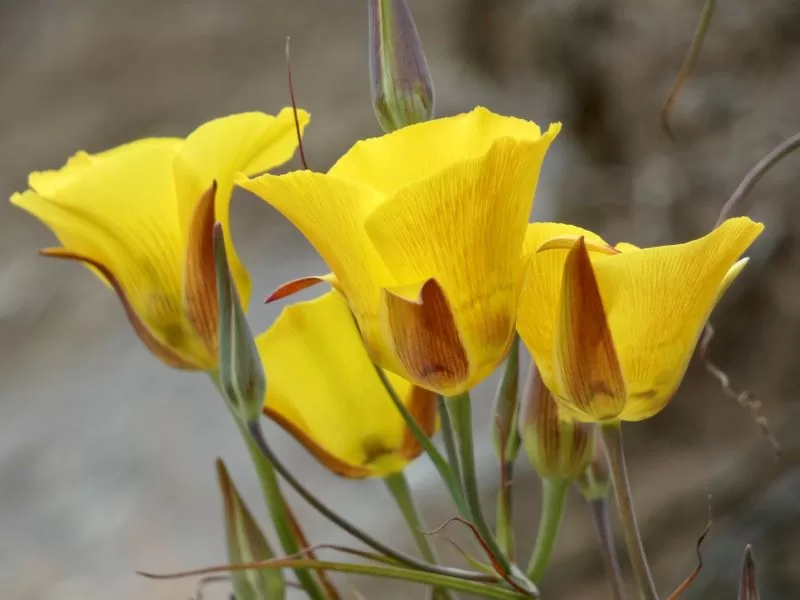Like the oaks that shade the outdoor theater stage, the roots of the Theatricum Botanicum run deep. Will Geer founded Theatricum Botanicum in the heart of Topanga in 1973. It has grown to be one of Los Angeles’ great, non-profit cultural institutions, working to “elevate, educate and entertain audiences of all ages by presenting thought-provoking classics, socially relevant plays, and education programs in a beautiful, natural outdoor sanctuary for the arts.” Join TNT for a look at the history of this extraordinary center for theater and the arts, and the life of its founder, Will Geer, in celebration of the Theatricum’s 50th anniversary!
It was a cool, gray Memorial Day weekend, and May gray has given way to June gloom this week. The marine layer did not put a damper on the Topanga Days Festival, but it did impact holiday beach attendance. The unofficial start of summer got off to an unexpectedly quiet start this year. Coastal fog was missing for much of spring and summer last year, as temperatures soared to record highs. While hot weather is expected to blaze onto the stage later this summer, a cool, slow start to the season is welcome by many.
It doesn’t matter what the weather is like, Memorial Day marks the start of peak beach season. Those of us who have been lulled by the soft start to the summer season need to begin planning ahead and leaving plenty of time to reach our destinations. We also need to be mindful of motorcyclists, bicyclists, absent-minded vacationers parked on the side of the road near trailheads and beach access ways, and frequent weekend gridlock. Ready or not, summer is here!

by Suzanne Guldimann
Cool weather is expected to linger though the first weeks of June, but right now, the long term weather forecast is calling for El Niño conditions to develop over the summer, and remain in place throughout the fall and winter. During an El Niño year, the Pacific trade winds weaken, and the ocean temperatures in the Equatorial Pacific become warmer than usual, generating the potential for more and bigger Pacific storms. That’s good news for West Coast surfers, but bad news for coastal residents, because the potential for big surf is greatly increased, and when the southern swell coincides with astronomical high tides it can spell disaster for homes, beaches, and coastal infrastructure.
El Niño also has the potential to deliver an early, wet rainy season to the California coast, and we aren’t the only ones impacted by the condition. El Niño years may result in fewer hurricanes in the Atlantic, but can also generate drought and flooding worldwide. Some of Australia’s worst fire seasons have occurred during El Niño. In California, serious flooding happened during the 1982-1983 El Niño, including flooding and rock slides in Topanga that pulled houses into the creek and left Topanga Canyon Blvd. buried under rocks and mud. In 2014, a partial El Niño—sometimes described as a “failed” El Niño—had the power to deliver Hurricane Maria, which devastated parts of Central America, before arriving in Southern California as a powerful tropical storm that caused major damage on the coast, including undercutting PCH at Tuna Beach, putting the water main and utility lines at risk.
Although climate change has the potential to make the impacts of El Niño more extreme, this isn’t a new phenomenon, only a new discovery. The term El Niño, which means “the Child,” was originally given by sailors to the warm, weak southern current that occurs along the west coast of South America around Christmas time. It has been expanded to describe the warm, “negative” phase of the Southern Oscillation (negative refers to abnormally high air pressure in the western Pacific). The companion term La Niña, “the Girl,” has been added to describe the cold, “positive” phase (abnormally low air pressure in the western Pacific).
It’s too early to tell what this potential El Niño condition will bring, or even if it will actually materialize. At this point, the indicators—including data from a network of buoys that measure water temperature, currents and winds in the equatorial band—point to an El Niño winter. What that means for the local mountains, the West Coast, the state of California, and the world remains to be seen. El Niño usually lasts for nine to 12 months, reaching its maximum strength in autumn and winter.
That gives everyone who lives by a creek or along the ocean an opportunity to get ready. Summer isn’t officially here yet, and most of us who live in the Santa Monica Mountains have our minds on the urgent task of brush clearance and fire safety, but it’s not too soon to think about fixing roofs and gutters, clearing drainage channels that may have been clogged during the heavy rains over the winter, and getting ready for what could—maybe? probably? possibly?—be another unusual year of weather.
Stay safe, be well. Happy June!













